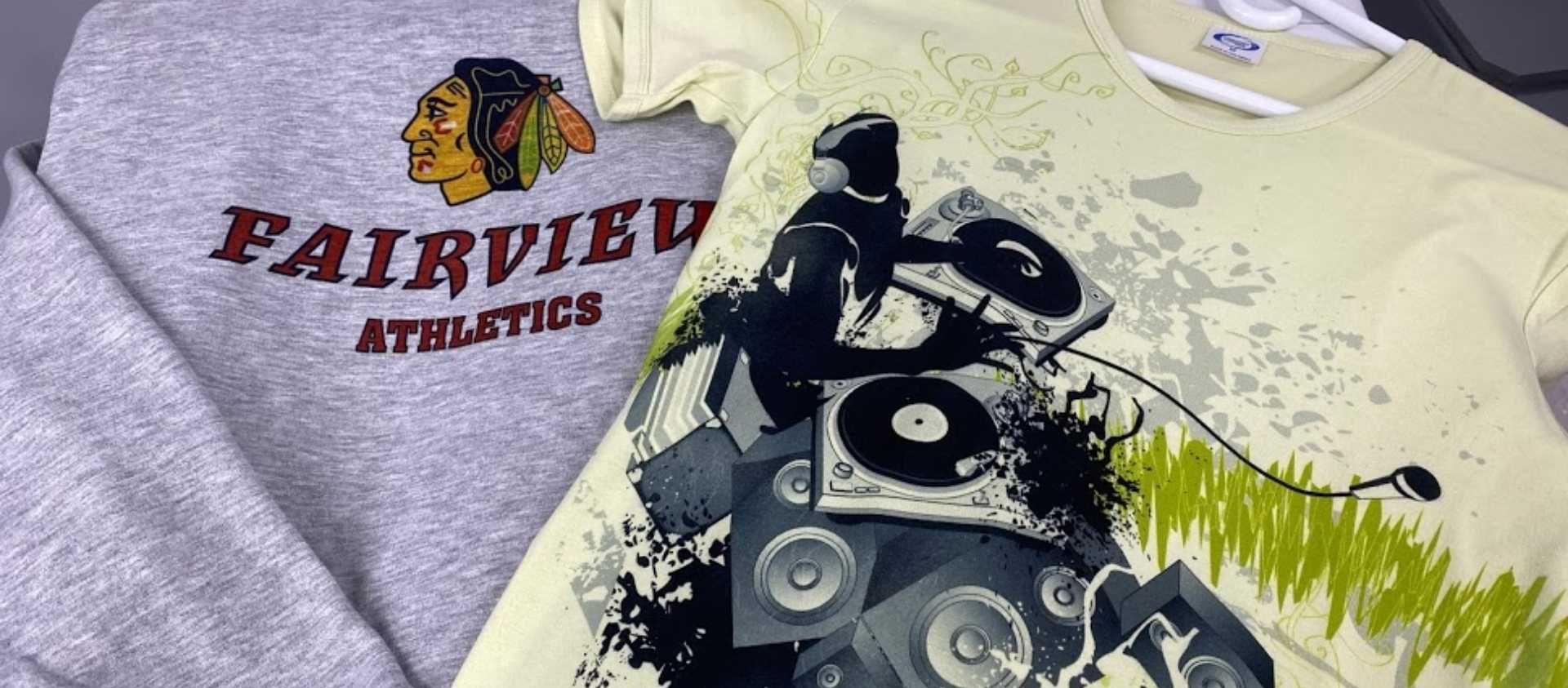Do you know that favorite graphic t-shirt of yours hanging in the closet? What if I told you that you can design shirts just like that one all from home? With the right equipment and supplies, you can earn an extra income all from the comfort of your home or even start a new hobby.
With the t-shirt business continuing to skyrocket over the next few years, it’s the perfect time to dive into this relatively inexpensive side hustle. The question is, where do you start?
There are 5 ways we recommend creating custom shirts at home, DIY style: White Toner Transfer Printing, Direct to Garment, Embroidery, Vinyl Heat Transfer, and Sublimation.
White Toner Transfer Printing
One way you can start making t-shirts at home is by investing into a Digital HeatFX white toner transfer printer. This printer uses a 5-channel system to print, which means it can print 5 colors on a transfer sheet at once: White, Black, Yellow, Magenta, and uses white toner instead of liquid ink.
How to print tees using DigitalHeat FX:
- Choose your art (Picture, text, graphic, logo, etc)
- Print your graphic using EZ Peel Transfer Paper
- Use second sheet to apply polymer to your transfer with a heat press machine
- Line up finished graphic on t-shirt under a heat pres
- Heat press for about 30 secs (may vary depending on t-shirt materials)
- Let cool & remove transfer sheet
- ‘Finish’ your shirt with a final heat press
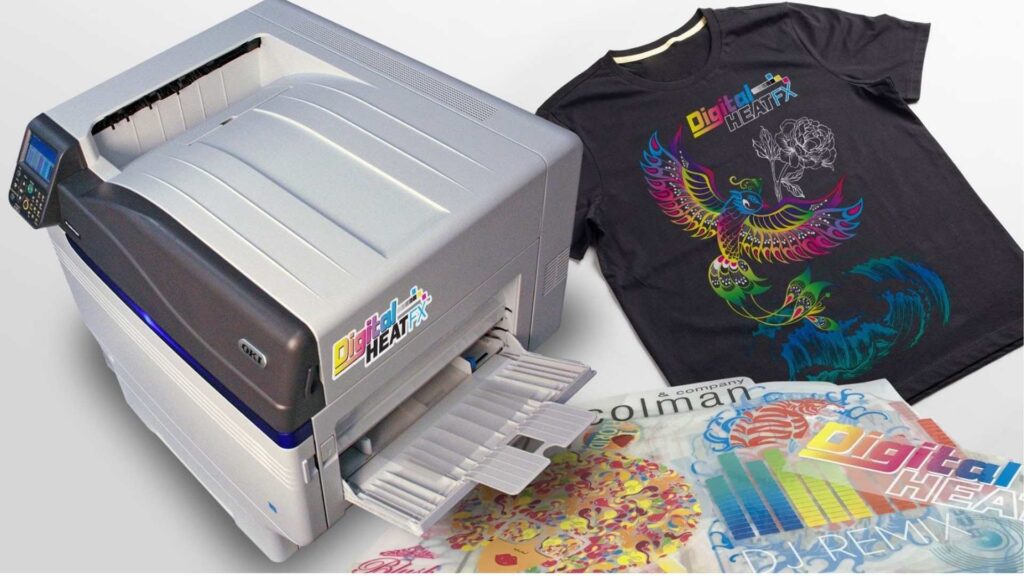
Initial Investment$$$ - $$$$
Why you will like it:
- Print full color graphics from logos to pictures of people
- Toner lasts longer than having an ink printer
- Print on lights and darks on a variety of items
- Ability to sell JUST transfers to shops instead of the entire shirt
- No maintenance since there’s no liquid ink
- No weeding like vinyl
- Go from art to finished shirt in minutes
What you might not like:
- Max transfer sheet size of 13” x 19”
- Multi-step process give room for user error smaller prints due to having to leave a space around the edges of the sheet
- Not the softest feel of prints on t-shirts
- Requires use of a high-end heat press
Direct to Garment Printing
Next, we have Direct to Garment Printing- yes, it literally means you print directly on the shirt! This process uses ink jets to pinpoint target ink to t-shirts, giving a high resolution image right on your shirt. The graphic is now part of the shirt, so it won’t peel or crack. The leading Direct to Garment printer is the DTG G4 with cutting edge technology and amazing looking prints.
How to print tees using DTG:
- Choose your art (Picture, text, graphic, logo, etc)
- Pretreat the shirt by using a pretreat machine or applying a small amount directly on your shirt with a HVLP sprayer.
- Heat press your shirt with a heat transfer sheet
- Load the shirt into the printer & print the graphic onto your shirt
- Heat press the wet shirt to cure it & your shirt is ready!
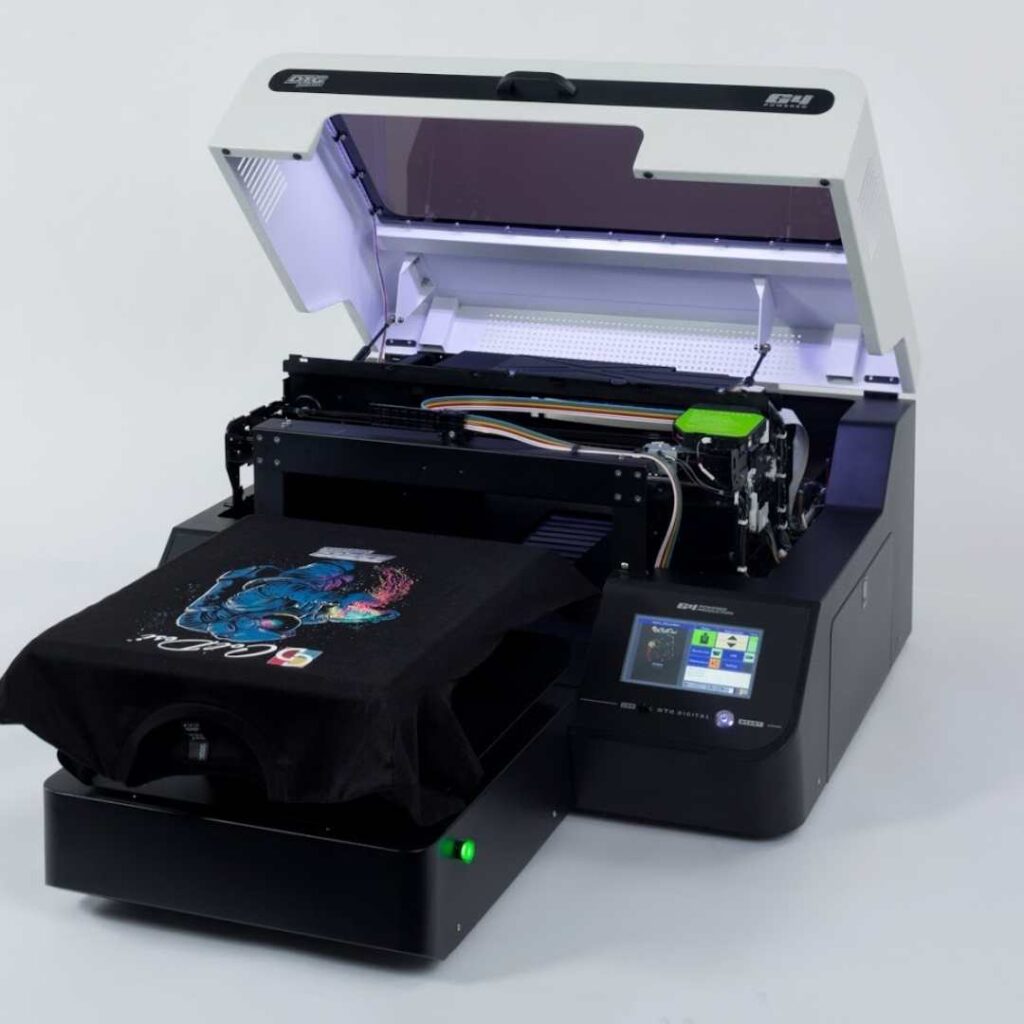
Initial Investment$$$$ - $$$$$
Why you will like it:
- Print images up to 16.5”x 24”
- Saves you money by purchasing ink rather than transfer paper or rolled material
- Prints on 100% cotton t-shirts
- Very high resolutions prints
- Super soft and washes great
- Vibrant colors
- Go from art to finished shirt in minutes
What you might not like:
- Cannot print on synthetic fabrics
- Requires dedicated space for both a pretreat station and printing
- Regular maintenance is required for liquid ink system
- Each shirt requires a liquid pretreatment
Embroidery
Another cool way to create your custom tee is through the embroidery process. This process has been around for quite some time, which is why it’s considered more of the traditional ways to make a custom t-shirt design. However, we updated the process with our touchscreen Avance 1501C embroidery machine. This Wi-Fi connected machine creates stitches at a maximum speed of 1200 stitches per minute, allowing a quick turn around for products out of large shops or smaller home-based startups.
How to design a tee using Avancé:
- Load your design onto the control panel of the machine using your USB or Wi-F
- Hoop your shirt
- Select your design & colors
- Select your hoop & trace
- Change your embroidery status
- Press start! Ready to sew!
This machine and process may be for you because it’s small, there is less mess, and the threads are cheap. You can create a custom t-shirt in no time depending on the size of your design
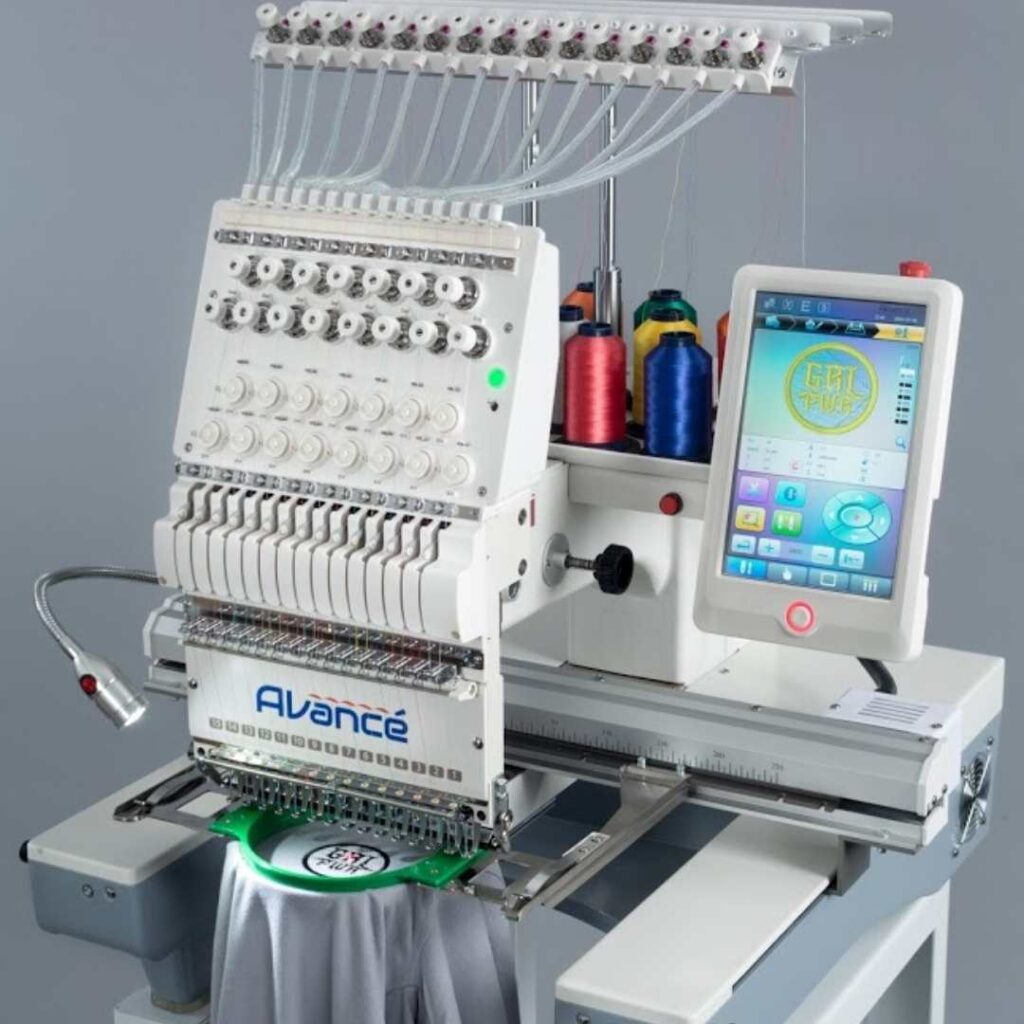
Initial Investment$$$ - $$$$$
Why you will like it:
- Stitch graphics up to a full jacket back size
- Thread and other supplies are very inexpensive
- Works on nearly all materials (Cotton, Polyester, Canvas, Leather, Shoes, Hats, etc)
- Lasts wash after wash after wash
- Considered a very high-end / top quality look
What you might not like:
- Not a way to create traditional ‘graphic tees’
- Slowest of all the methods
- Art requires a specific skill of learning to ‘digitize’ the graphic
Heat Transfer Vinyl
This method involves using rolls or sheets of a heat transfer vinyl material. This material is then ‘cut’ to the shape of your graphic. You probably know someone who has a ‘hobby’ version of one of these machines they purchased from a craft store. This is a popular method for creating t-shirts and easy to use.
How to print tees using Heat Transfer Vinyl & a Heat Press
- Create your design using the Graphtec Studio software
- Adjust your cutter to the type of vinyl you will be using
- Cut out all the separate parts of the design
- Prepress your t-shirt
- "Weed” your heat transfer vinyl (remove unwanted parts)
- Lay your first layer down onto the garment
- Press your shirt
- Remove the carrier sheet (clear film)
- Repeat for all layers/colors until you reach the desired graphic
Using the heat transfer vinyl method could be useful for you in many ways. You have the option to use glitter and metallic vinyl and if you plan on using this in small quantities, your production rate will increase.
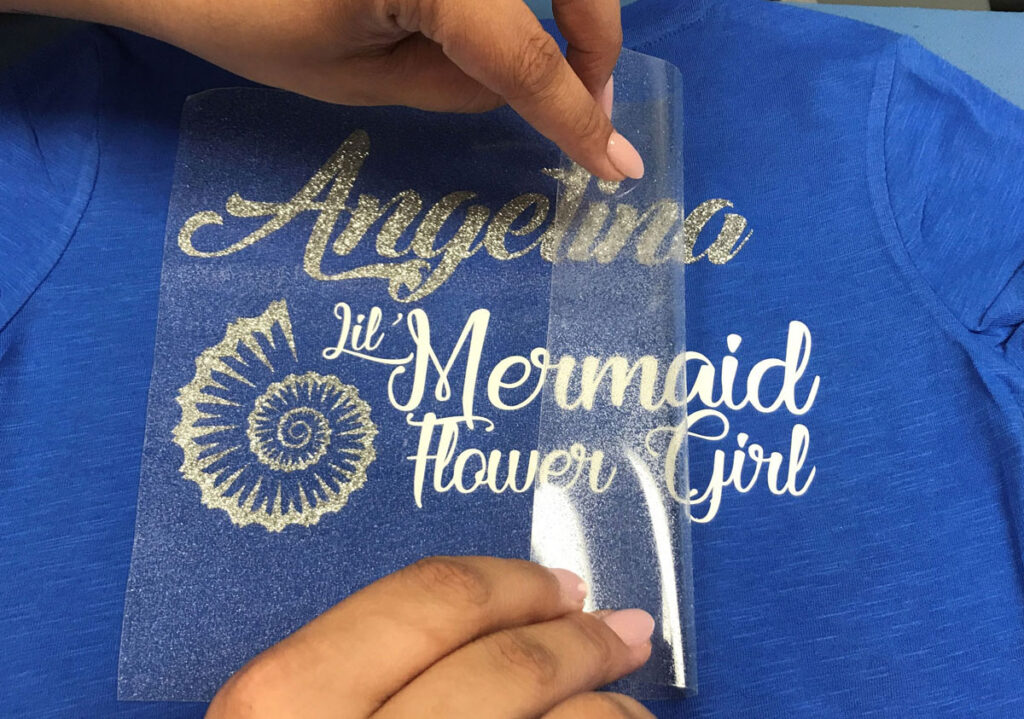
Initial Investment$ - $$$
Why you will like it:
- Very fast when creating simple one-color designs
- Easiest to learn and teach others to use
- Available in glitter, metallic, reflective, neon and more
- Super soft finish and washes great
- Create transfers that can be sold wholesale
- Lowest investment to get started
What you might not like:
- When creating a multi-colored graphic it can be very time consuming
- Graphics with too much detail become unrealistic to create
- Weeding vinyl can be considered tedious
- Wasted materials means higher cost to create finished products
Sublimation
Last but not least is sublimation. This process is a bit different because you must use dye sublimation-based ink and paper. With these types of designs, it’s best to print on white or lighter items made of 100% polyester. The printer we use for this is the Sawgrass Virtuoso SG500.
How to print tees using Sawgrass Virtuoso SG500
- Choose your image & print
- Line the graphic up where you’d like on the t-shirt
- Use heat tape to keep the shirt in place & press
- Let cool & pull transfer off
Using the heat transfer vinyl method could be useful for you in many ways. You have the option to use glitter and metallic vinyl and if you plan on using this in small quantities, your production rate will increase.

Initial Investment$$ - $$$
Why you will like it:
- Easy to learn
- Washes and wears well
- Cannot feel the image on the shirt
- Works on a wide variety of substrates (Shirts, Mugs, Mousepads, etc)
What you might not like:
- Only works on white / light colored garments
- Requires 100% polyester or a specific sublimation coated item
- Liquid ink printing is slower than other methods
Screen printing is another way to make t-shirts at home, however we don’t recommend it. Reason being, it’s not a preferred home-based system. Screen printing requires you to deal with hazardous materials that require specific disposal methods. These are materials many people will not want, or cannot have, in their homes.
Regardless of the method you chose to create your t-shirts, we have the machines and supplies to help you get on your feet. Not to mention, with any purchase of our machines, we provide support and training from an experienced team that has a combined total of 65 years in the decorated apparel industry.

